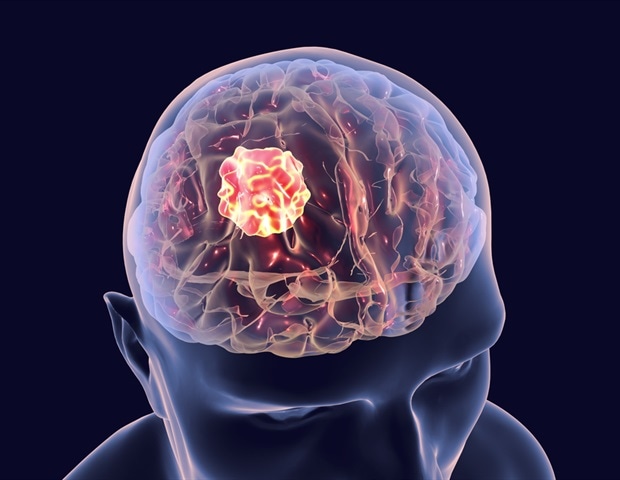
In a ground-breaking new study, scientists have uncovered the mechanics of the blood-tumor barrier, one of the most significant obstacles to improving treatment efficacy and preventing the return of cancerous cells. The research team, led by Dr. Xi Huang, a Senior Scientist in Developmental & Stem Cell Biology program at The Hospital for Sick Children (SickKids), lays the foundation for more effectively treating medulloblastoma, the most common malignant pediatric brain tumor.
“Despite decades of research on brain cancer, the mechanisms that govern the formation and function of the blood-tumor barrier have remained poorly understood,” says Huang, who is also a Principal Investigator at the Arthur and Sonia Labatt Brain tumor Research Centre and Canada Research Chair in Cancer Biophysics. “Our discoveries represent a breakthrough in the understanding of how the blood-tumor barrier forms and works.”
In a paper published today in Neuron, the research team identifies a way to reduce the impact of the blood-tumor barrier on medulloblastoma treatment.
“Our research illuminates a path to overcome the blood-tumor barrier and more effectively treat devastating brain tumors in children.”
Reimagining the blood-tumor barrier
The blood-brain barrier controls to what extent molecules in our blood enter the tissue in our brain – with the biological purpose of preventing harmful agents from being spread to the brain. However, this process also prevents more than 95 per cent of small molecule drugs from entering the brain, making conditions of the brain very difficult to treat.
The barrier is formed in part by specialized cells that tile the blood vessels in the central nervous system, called astrocytes.
Researchers have long thought that these astrocytes also comprise the blood-tumor barrier, which forms a similar barrier around brain tumor cells to prevent effective delivery of chemotherapy. Huang and his team have now identified that the blood-tumor barrier in medulloblastoma is a fundamentally new structure constructed by the tumor cells themselves.
Breaking the barriers to treatment
Huang’s team, led by co-first authors Xin Chen, Ali Momin and Siyi Wanggou at SickKids, found that medulloblastoma tumor cells depend on the ion channel ‘Piezo2,’ a protein that plays an important role in cellular signaling, to help form the blood-tumor barrier. By genetically silencing Piezo2 in mice, medulloblastoma tumor cells were unable to form the blood-tumor barrier. Without this barrier, etoposide, a common chemotherapy medication, was better able to cross the blood-tumor barrier and treat the medulloblastoma tumor cells.
In addition to improving the delivery of chemotherapy, the researchers also found that medulloblastoma tumor cells are significantly more sensitive to etoposide after silencing Piezo2.
Two major obstacles in brain cancer treatment are the blood-tumor barrier and a unique population of tumor cells that are intrinsically insensitive to chemotherapy. We found that knocking out Piezo2 addresses both obstacles that can underlie therapy failures in patients.”
Dr. Xi Huang, Senior Scientist, Developmental & Stem Cell Biology Program, The Hospital for Sick Children
“This research may not only inform potential new ways to deliver effective therapies for pediatric brain cancer, but also inspire renewed investigation into the blood-tumor barrier in other primary and metastatic brain tumors.”
Huang initiated this project seven years ago in his lab at SickKids, with other notable findings including how brain tumor cells hijack force-activated ion channels to promote tumor stiffening and growth.
Source:
The Hospital for Sick Children
Journal reference:
Chen, X., et al. (2022) Mechanosensitive brain tumor cells construct blood-tumor barrier to mask chemosensitivity. Neuron. doi.org/10.1016/j.neuron.2022.10.007.

 PARENTING TIPS
PARENTING TIPS







 PREGNANCY
PREGNANCY








 BABY CARE
BABY CARE








 TODDLERS
TODDLERS








 TEENS
TEENS








 HEALTH CARE
HEALTH CARE







 ACTIVITIES & CRAFTS
ACTIVITIES & CRAFTS








 CONTACT
CONTACT ABOUT
ABOUT
















